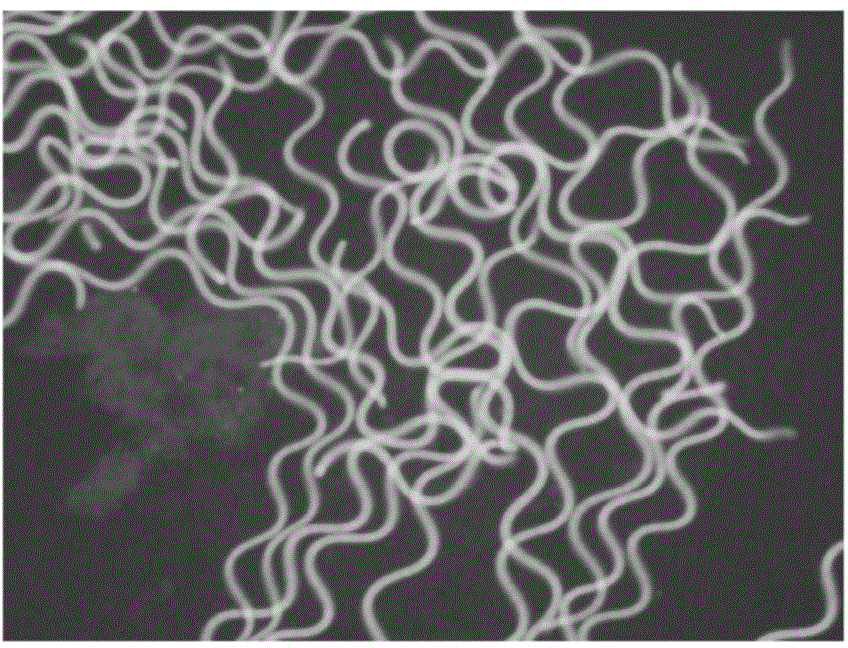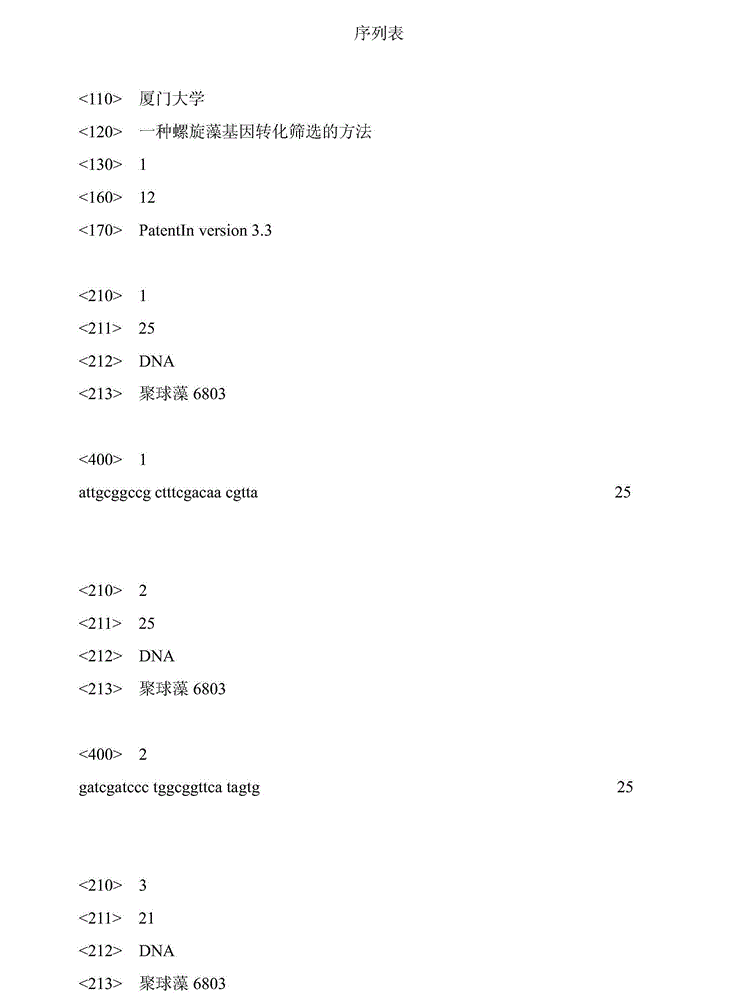Method for screening spiral seaweeds through gene transformation
A technology for gene transformation and spirulina, applied in the field of genetic engineering, can solve the problems of unstable hybridization signal, low purity of transformed algae, loss of integrated genes, etc., and achieves the effects of low cost, improved purity, and simple screening method.
- Summary
- Abstract
- Description
- Claims
- Application Information
AI Technical Summary
Problems solved by technology
Method used
Image
Examples
Embodiment Construction
[0014] The present invention will be further described below by embodiment.
[0015] Step 1 Construction of Spirulina transposon-mediated system
[0016] 1.1 Cloning of cyanobacterial transposon sequence (IS)
[0017] A set of primers IS1-1, IS1-2, IS1-3 were designed according to the cyanobacteria IS gene sequence provided by NCBI, wherein NotI, ClaI and EcoRI sites were respectively set on IS1-1, IS1-2, IS1-3:
[0018] IS1-1:5-ATT GCGGCCGC TTTCGACAACGTTA-3
[0019] Not I
[0020] IS1-2:G ATCGAT CCCTGGCGGTTCATAGTG
[0021] ClaΙ
[0022] IS1-3:5-G GAATTC CTAGGCCACTGACT-3
[0023] EcoR I
[0024] In a 0.5ml sterile centrifuge tube, add in sequence: ddH 2 O 37 μl, 10×Taq enzyme buffer 5 μl, 4×dNTP (2.5 mmol / L) 4 μl, IS1-1 primer 1 μl, IS1-3 primer 1 μl, template (Microcystis aeruginosa 6803 genomic DNA) 1 μl, Taq enzyme 1 μl, Total volume 50 μl.
[0025] PCR reaction parameter setting: 94°C pre-denaturation, 5min;
[0026] Then denaturation at 94°C for 45s; renat...
PUM
 Login to View More
Login to View More Abstract
Description
Claims
Application Information
 Login to View More
Login to View More - R&D
- Intellectual Property
- Life Sciences
- Materials
- Tech Scout
- Unparalleled Data Quality
- Higher Quality Content
- 60% Fewer Hallucinations
Browse by: Latest US Patents, China's latest patents, Technical Efficacy Thesaurus, Application Domain, Technology Topic, Popular Technical Reports.
© 2025 PatSnap. All rights reserved.Legal|Privacy policy|Modern Slavery Act Transparency Statement|Sitemap|About US| Contact US: help@patsnap.com



